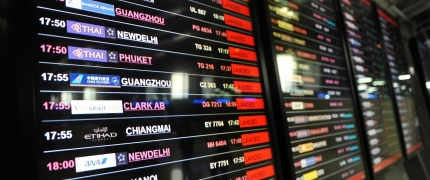Southeast Asia countries with a population of more than 630 million people have been experiencing fast rates of healthcare spending growth over the last several years. Emerging healthcare markets in Indonesia, Malaysia, Vietnam and Philippines are changing rapidly, as healthcare systems in these markets expand their capabilities to deliver healthcare to large populations of undiagnosed and untreated patients.
To capture opportunities found deep within SEA emerging markets and its cities, a nuanced understanding of the region – the complex matrix of healthcare systems, government policies, epidemiological and socio-economic factors interacting and shaping the decisions of healthcare professionals and patients delivering and using drugs and medical devices, is critical.
Government drives for universal health insurance coverage and healthcare infrastructure improvements in majority of SEA countries, notably in Malaysia and Indonesia, will create volume growth opportunities in the value segment for pharma companies. Accelerating health and regulatory reforms in the region promise better healthcare access for 630 million people living in the region.
Meanwhile, the region’s aging population and burgeoning middle-class, affluent income groups are widening divergences between markets providing essential healthcare and higher-tiered private healthcare markets delivering better and more innovative healthcare.
Consequently, attractive entry points line the demand spectrum from the lower-end value segment and high-end healthcare services.
Current trend:
The three most populous countries in Southeastern Asia are implementing Universal Health Coverage. If target timelines are met, 80% of SEA population – through Universal Health coverage programmes in Indonesia, Philippines, Thailand and Vietnam, will have access to basic healthcare by 2020 that will generate enormous demand for generic drugs and low-priced medical devices.
Indonesian Universal Health Coverage (UHC).
The primary urgency for government is to contain healthcare costs that shift expenditures and demand toward the value segment in medical devices and generic drugs. In Indonesia, branded generics are delisted from the reimbursement list once an unbranded generic product is available which effectively shuts multinationals out of JKN- covered public hospitals. The law mandates that public hospitals purchase 80% of their drugs from the Government Pharmaceutical Organisation.
SEA’s target consumer groups.
Two dominant groups of consumers in the healthcare market– the aged and the middle-affluent income groups are reshaping healthcare demand and creating new growth segments in the prevention and care of non-communicable disease areas.
Southeast Asia is undergoing a demographic transition and consequently, epidemiological shift. The size of the middle and affluent class in each country is set to grow rapidly and boost household consumption. Better living standards breed a new host of non-communicable diseases (NCDs) – diabetes, cancer and heart disease.
People who are living better are also living longer for the onset of age-related diseases to happen. By 2020, Indonesia will join the ranks of Singapore and Vietnam as an aging country – with more than 10% of the population being older than 60 years old that shift focus from treatment to prevention.

